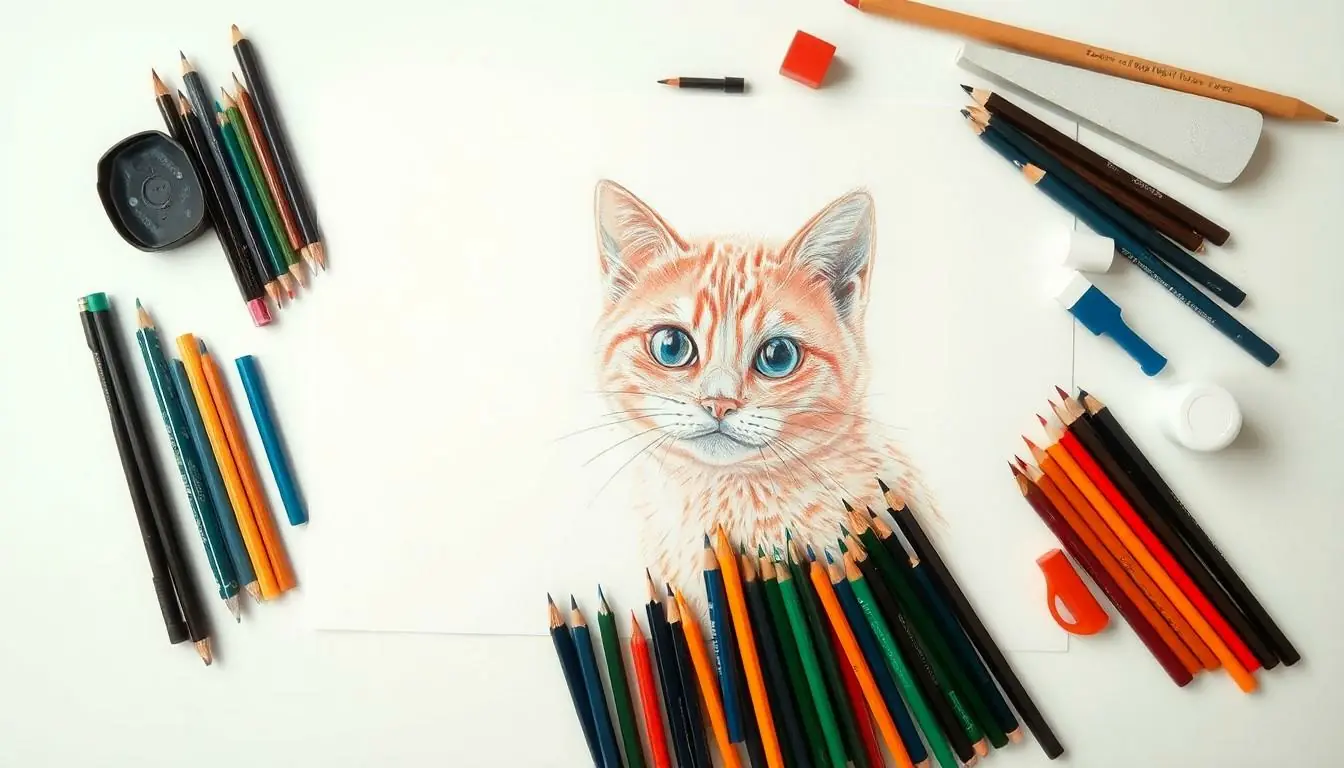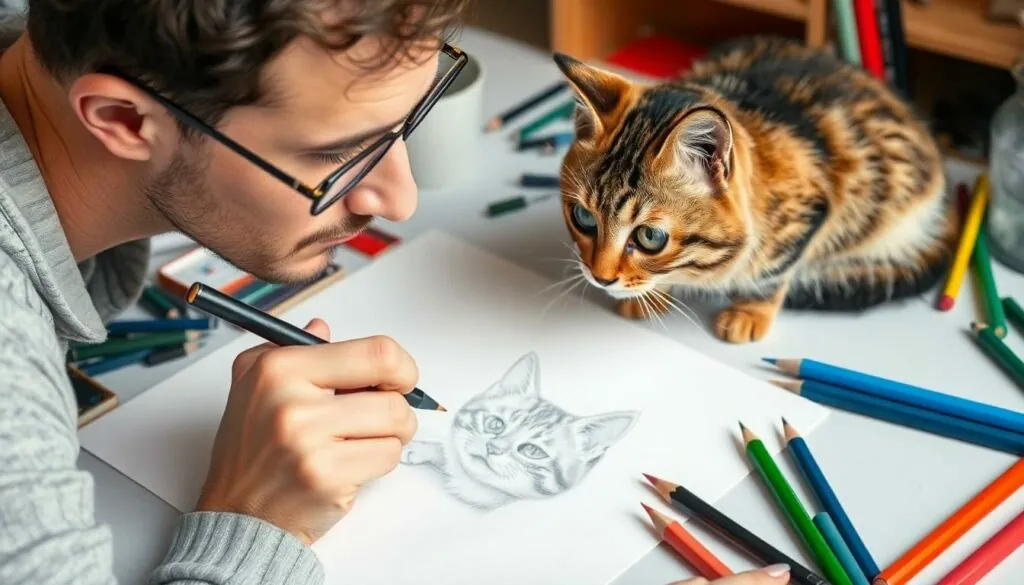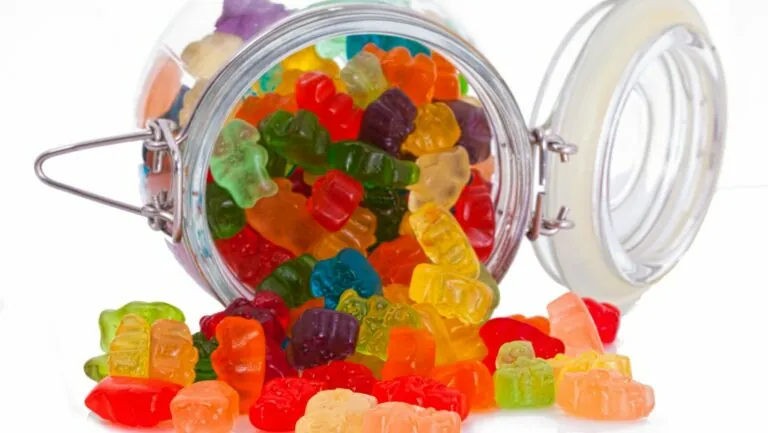Table of Contents
ToggleImagine a world where every cat you meet is not just a furry companion but a masterpiece waiting to be captured on paper. Realistic cute cat drawings bring those whiskered wonders to life, transforming everyday felines into art that tugs at the heartstrings. Whether it’s the mischievous glint in their eyes or the soft curve of their paws, these drawings can make anyone say, “I need this on my wall!”
Understanding Realistic Cute Cat Drawing
Realistic cute cat drawings create an emotional connection between artist and viewer. These artworks capture the charm and personality of cats through detailed representation.
The Appeal of Cats in Art
Cats attract attention in art due to their expressive features. Their playful antics inspire artists to explore various styles. People often find joy in their playful nature and soft fur, making them ideal subjects for artistic expression. The allure of cats transcends cultures, as they symbolize comfort and companionship. Artists frequently depict them to evoke feelings of warmth and nostalgia.
Key Characteristics of Realistic Drawings
Realistic drawings of cats focus on precise details. Artists pay close attention to fur texture, color patterns, and eye reflections. Capturing lifelike expressions showcases the cat’s personality. Lighting and shadow play a crucial role in enhancing depth and dimension. Proportions maintain accuracy, creating a believable representation. Observational skills become essential, as artists observe live cats to understand their unique attributes.
Materials Needed for Realistic Cute Cat Drawing

Gathering the right materials is essential for creating a realistic cute cat drawing. Select high-quality items to achieve the best results.
Choosing the Right Paper
Selecting quality paper impacts the final artwork. Smooth or textured paper types serve different techniques. For detailed pencil work, drawing paper with a fine surface ensures crisp lines. Alternatively, watercolor paper works well for colored pencil or mixed media techniques. Heavier weights like 200 gsm offer durability while resisting warping. Additionally, acid-free options prevent yellowing over time.
Recommended Pencils and Tools
Using the right pencils and tools enhances accuracy and detail. Graphite pencils ranging from H (hard) to B (soft) provide a range of shading options. Soft pencils (B grades) allow for darker, rich shadows, while hard pencils (H grades) create fine lines and highlights. Blending tools, like tortillons or blending stumps, are helpful for smooth transitions in fur texture. Erasers, both kneaded and precision types, aid in correcting mistakes and highlighting areas. Incorporating color pencils with a range of hues adds vibrancy to the drawing.
Techniques for Creating Realistic Cute Cat Drawings
Creating realistic cute cat drawings requires a range of techniques that capture the charm of these beloved animals. Artists can utilize various methods to bring their feline subjects to life.
Basic Sketching Methods
Starting with basic sketching methods lays the foundation for a successful drawing. Artists often begin with light pencil strokes to establish proportions. Creating simple shapes helps map out the cat’s body, head, and limbs. Focusing on the cat’s unique posture allows for a more accurate representation. Any adjustments made during this stage can enhance overall accuracy. Lastly, refining the initial lines gradually leads to a detailed outline ready for further development.
Adding Texture and Detail
Adding texture and detail brings depth to the cat drawing. Artists typically use short, controlled strokes to mimic fur patterns. Varying the pressure on the pencil creates a range of shading effects. Capturing highlights and shadows adds realism, enhancing the three-dimensional feel of the fur. Incorporating small details like whiskers and eyes contributes to the cat’s personality and expression. Observing real cats can provide essential insights into texture variations and color tones.
Step-by-Step Guide to Drawing a Realistic Cute Cat
Creating a realistic cute cat drawing involves several structured steps that enhance the final artwork. Following this guide ensures clarity and precision at each phase.
Initial Sketch Outline
Start by lightly sketching basic shapes to form the cat’s body structure. Circles generally represent the head, while ovals convey the body and limbs. Establish proportions from the outset to maintain balance. From there, refine these shapes by connecting them to form the cat’s outline. Initial lines should remain light to allow for easy adjustments. Incorporate the specific posture of the cat, which captures its unique stance. Focus on positioning the ears proportionally to the head’s shape. Finally, emphasize the tail’s placement, reflecting the cat’s mood or personality.
Shading Techniques for Depth
Shading contributes significantly to the realistic appearance of the cat. Begin with light pressure on the pencil to create a smooth base layer. Gradually build the shading’s intensity for depth by applying varied pencil pressure. Use a blending tool to soften harsh lines, mimicking the softness of the cat’s fur. Pay close attention to the direction of the fur when applying strokes. Include shadows in areas where light naturally avoids, like beneath the chin or around the ears. Small, controlled adjustments help achieve a three-dimensional effect. Highlights around the eyes can enhance the cat’s expressiveness, adding life to the drawing.
Realistic cute cat drawings offer a unique way to celebrate the charm of these beloved animals. By capturing their intricate details and expressive features artists can evoke emotions that resonate with cat lovers everywhere. The techniques and materials discussed empower aspiring artists to create their own feline masterpieces.
Whether through careful observation or experimenting with various tools the journey of mastering this art form can be both rewarding and enjoyable. As artists refine their skills they not only enhance their creativity but also forge a deeper connection with the captivating world of cats. Embracing this artistic endeavor opens the door to endless possibilities for creativity and self-expression.







